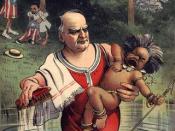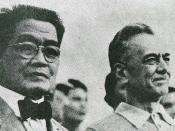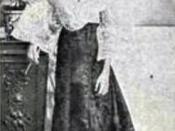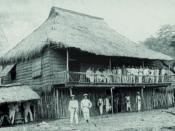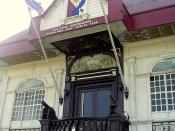When Emilio Aguinaldo was three years old, in 1872, there was a revolt against the Spaniards in the Spanish fort of Cavite. One of his relatives panicked and left Emilio in the woods. Emilio had been crying and had been bitten by ants when he was found. He just recovered from having small pox. Aguinaldo said, "From childhood my life had been full of suffering and sorrow."ÃÂ When Emilio was young he didn't like going to school; he wanted to play instead of studying. His family sent him to a private school, but he failed in class. He also failed at San Juan de Latran. After that private tutors taught him. When a cholera epidemic broke out in Manila, Emilio returned to Kawit. He quit school for good at the age of 13. Emilio's father died in 1878, and his mother was left alone to run a small farm. I think Emilio Aguinaldo solved his sad childhood by growing up and becoming mature.
Elmer A. Ordenez, the author, became interested in Emilio Aguinaldo because his wife was from Imus, Cavite, where Aguinaldo fought his first big battle. Ordenez graduated from the university of the Philippines, where he teaches English and Comparative literature.
Emilio fell in love with a woman from Visayan Island. In 1895, Aguinaldo was elected town mayor; he was 25 years old. That same year he married Hilaria Del Rosario. He was very happy during this event. They had seven children.
On August 29, 1896, Aguinaldo waited for a signal that would mean the Philippine revolution would start. He knew that a secret group called the Katipunan was about to begin the revolution. This was in Kawit when Aguinaldo and his men waited all night for the signal that the revolution would begin. The gas lamps of Bagumbayan were still burning. Something was wrong. Aguinaldo was confused during this event. He didn't know that other Katipunans, led by Bonifacio, were captured outside Manila in San Juan Del Monte.
